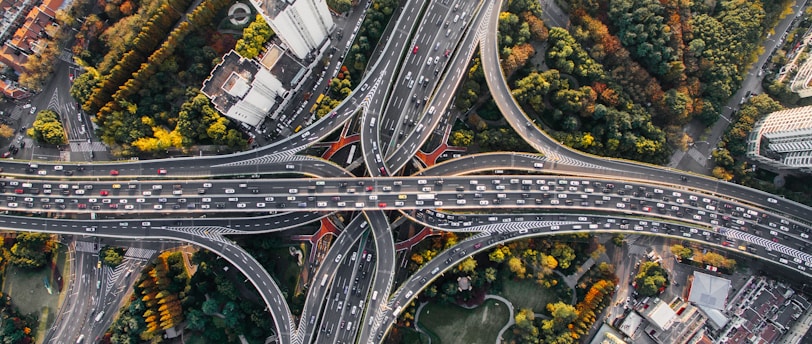Braess's Paradox: Revealing Why More Roads Worse Traffic
“This isn't life in the fast lane, it's life in the oncoming traffic.” ― Terry Pratchett
MENTAL MODEL


Adding one or more roads to a road network slows overall traffic. Instead, removing certain parts of a malfunctioning network is how you improve it. The idea is that if each driver is making the self-interested decision as to which route is the quickest, a shortcut would be chosen too often for it to have the shortest travel time possible. In other words, if you pave out a shortcut, everybody will start to go by that street. Due to the density of the flow, the running times won’t be cut short. Rather, they will be stretched out. Traffic will just redistribute itself. Thus adding extra capacity to a network where entities are selfish — as is true of humans in traffic systems — causes overall performance to go down.
Note that this applies not only to traffic, though traffic is a prime example of Braess’s paradox. In Seoul, South Korea, traffic around the city sped up when an expressway was removed to restore a creek. In Stuttgart, Germany, after gigantic investments into the road network, the traffic did not improve. That is, until the newly built road was closed. In 2009, New York closed Broadway at Times Square and Herald Square. Traffic flow improved.
In biological and ecological systems, removing part of a perturbed network can rescue it. For managing an endangered species’ food web, selectively removing a doomed species from the network can prevent a series of further extinctions. A sports team can be seen as a network of possibilities to scoring, forming “routes” to the goal. The presence of a start player could actually reduce the overall efficiency of a team, analogous to a shortcut that is overused through a road network. Thus intuitively, adding new channels allows for more efficiency, but reality often behaves differently. This paradox highlights how misaligned individual rational choices tend to be from the collective good.


Real-world instances of Braess’s paradox:
Traffic: a new road is constructed in a congested urban area with the intention of reducing traffic. Initially, some drivers benefit. But as more drivers change their route to the advantageous new road, the increased volume results in bottlenecks at key intersections, and a longer overall travel time for everybody.
Internet and Data: increasing bandwidth or adding extra pathways in a computer network seems to promise improved performance. However, if data routing algorithms shift traffic, the network can experience unexpected congestion and slow down overall data transfer speed. Hence network engineers have to carefully model and simulate changes to avoid unintended consequences.
Urban Planning: adding new transit lines or infrastructure improvements to reduce crowding in a city. The new infrastructure will most likely just alter commuter behavior in a way that overburdens connecting routes, resulting in a system that is less efficient or no more efficient than before.
How you might use Braess’s paradox as a mental model: (1) think in systems — when making changes to a network (traffic, data, organization, team) consider how individual choices affect collective outcomes; (2) place them under the microscope — understand that individuals act in their own self-interest, which may or may not align with the optimization of the broader system; (3) plan for failure — before you implement any changes, analyze how people’s behavior might change and how that affects the whole network; (4) change, but slowly — implement changes gradually and monitor whether there are systemic improvements before you invest fully only to realize Braess’s paradox turns your project into a flop.